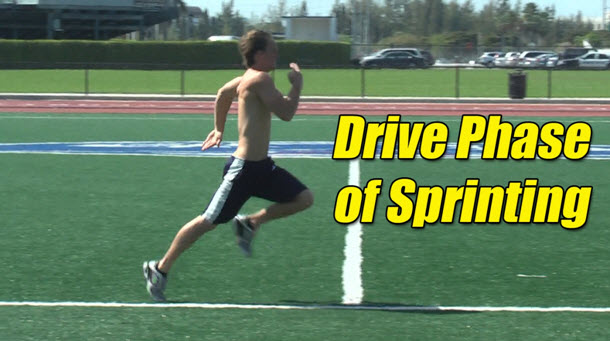Drive Phase of Sprinting and Running: Muscles Involved.

If you want to improve your running speed it will be helpful to know the 3 phases of the running process and the muscles used in each phase. By understanding this you can train all the muscles used when running for faster running speed. This post will focus on the drive or push phase of running and identify the muscles used in the push phase. Speed training exercises that focus on these muscles can be found in the links below. The drive phase of sprinting begins when the knee is perpendicular to the ground as seen in Figure 1 below: Figure 1. Drive phase starts when the knee is perpendicular to the ground. The drive phase ends when the entire leg is extended behind you. See image below. Both the starting and ending positions of the drive phase can be seen side by side in the image below: The drive phase is powered by three basic muscle groups; the hip extensors, which involve your glutes and hamstrings, your knee extensors, or quadriceps